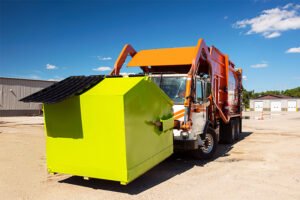Top Tree Surgeon Company Reliable Arboriculture Specialists

Tree surgeons, also known as arborists, play a crucial role in the maintenance and care of trees. These professionals specialize in the diagnosis, treatment, and management of trees to ensure their health, safety, and longevity. In urban and suburban environments, where trees often coexist with buildings and infrastructure, the services of tree surgeons are particularly valuable.
What Does A Tree Surgeon Do?
Tree Health Assessment
One of the primary responsibilities of a tree surgeon is to assess the health of trees. This involves inspecting trees for signs of disease, pest infestation, structural weaknesses, and other issues that may compromise their health or stability. Through careful observation and diagnostic techniques, tree surgeons can identify problems early on and recommend appropriate interventions to mitigate risks and promote tree health.
Tree Pruning And Trimming
Tree pruning and trimming are essential practices for maintaining the aesthetics, health, and safety of trees. Tree surgeons are skilled in the art of pruning, which involves removing dead, diseased, or overgrown branches to improve airflow, sunlight penetration, and overall tree structure. By carefully pruning trees, tree surgeons can enhance their appearance, prevent hazards such as falling branches, and promote healthy growth.
Tree Removal
In cases where trees pose a risk to property or public safety, tree removal may be necessary. Tree surgeons are trained to safely and efficiently remove trees using specialized equipment and techniques. Whether it’s due to storm damage, disease, or construction projects, tree removal requires careful planning and execution to minimize environmental impact and ensure safety.
Emergency Tree Care
During storms or other natural disasters, trees may become damaged or uprooted, posing immediate risks to people and property. In such emergencies, tree surgeons are often called upon to provide swift and effective tree care services. From clearing fallen trees blocking roads to stabilizing damaged trees to prevent further damage, tree surgeons play a vital role in emergency response efforts.
Skills And Qualifications Of A Tree Surgeon
Knowledge Of Tree Biology And Health
Tree surgeons must have a deep understanding of tree biology, physiology, and health. This includes knowledge of different tree species, their growth habits, and common diseases and pests that affect them. By understanding the underlying biology of trees, tree surgeons can accurately diagnose problems and recommend appropriate treatments.
Climbing And Rigging Techniques
Tree work often involves working at height, requiring tree surgeons to be proficient in climbing and rigging techniques. Whether ascending tall trees to perform pruning or removing large branches using rigging systems, tree surgeons must possess strong climbing skills and an understanding of safety protocols to prevent accidents and injuries.
Equipment Proficiency
Tree surgery requires the use of specialized equipment and tools, including chainsaws, pruning shears, climbing gear, and safety harnesses. Tree surgeons must be proficient in operating and maintaining this equipment to ensure safe and efficient work practices. Regular equipment inspection and maintenance are essential to minimize the risk of accidents and ensure optimal performance.
Safety Training And Certification
Safety is paramount in tree surgery, given the inherent risks associated with working at height and with heavy machinery. Tree surgeons undergo rigorous safety training and certification programs to ensure they are equipped with the knowledge and skills to work safely in various environments. From proper climbing techniques to hazard identification and emergency procedures, safety training is a fundamental aspect of a tree surgeon’s education and professional development.
Importance Of Proper Tree Care
Benefits Of Well-Maintained Trees
Well-maintained trees offer a host of benefits to the environment, society, and economy. Trees improve air quality by absorbing carbon dioxide and releasing oxygen, mitigate the effects of urban heat islands by providing shade and cooling, and enhance property values and aesthetic appeal. By investing in proper tree care, communities can reap these benefits while ensuring the health and vitality of their urban forests.
Environmental Impact
Trees are integral to ecosystems, providing habitat and food for wildlife, stabilizing soil, and regulating water cycles. However, urbanization and human activities can exert pressure on trees, leading to deforestation, habitat loss, and ecological degradation. Tree surgeons play a crucial role in mitigating these impacts by preserving and managing urban trees, thereby contributing to biodiversity conservation and environmental sustainability.
Safety Considerations
Neglected or improperly maintained trees can pose safety hazards to people and property. Dead or decaying branches may fall unexpectedly, risking injury or damage during storms or high winds. In urban areas, trees planted near buildings or power lines can cause structural damage or utility disruptions if not properly pruned or removed. By prioritizing tree care and maintenance, communities can minimize these risks and ensure the safety of their residents and infrastructure.
Challenges Faced By Tree Surgeons
Working Conditions
Tree surgery often involves working outdoors in various weather conditions, including heat, cold, rain, and snow. Tree surgeons may also encounter challenging terrain, such as steep slopes or uneven ground, which can make tree work physically demanding and hazardous. Despite these challenges, tree surgeons are dedicated professionals committed to providing quality tree care services under all conditions.
Risk Of Injury
Working at height and with heavy machinery poses inherent risks of injury in tree surgery. Falls, cuts, and impact injuries are among the most common hazards faced by tree surgeons, highlighting the importance of proper training, equipment, and safety protocols. By adhering to strict safety standards and practices, tree surgeons can mitigate these risks and ensure the well-being of themselves and their team members.
Environmental Factors
Tree surgeons must also contend with environmental factors that can impact their work, such as wildlife encounters, insect bites, and exposure to allergens or toxic plants. Additionally, urban trees may be subject to pollution, soil compaction, and other environmental stressors that affect their health and vigor. Tree surgeons must consider these factors when assessing tree health and implementing appropriate care strategies to mitigate environmental impacts.
How To Become A Tree Surgeon
Education And Training Requirements
Becoming a tree surgeon typically requires a combination of formal education and hands-on training. Many tree surgeons have backgrounds in arboriculture, forestry, horticulture, or related fields. Academic programs and vocational schools offer courses and certifications in tree care and management, providing students with the knowledge and skills needed to pursue a career in the field.
Apprenticeships And Hands-On Experience
In addition to formal education, aspiring tree surgeons often gain practical experience through apprenticeships or internships with established tree care companies or arborists. Hands-on training allows individuals to develop essential skills in tree climbing, pruning, and safety procedures under the guidance of experienced professionals. Apprenticeships provide valuable opportunities for learning and skill development, paving the way for a successful career in tree surgery.
Certification And Licensing
Many jurisdictions require tree surgeons to obtain certification or licensure to practice professionally. Certification programs, such as those offered by the International Society of Arboriculture (ISA) or the Tree Care Industry Association (TCIA), validate a tree surgeon’s knowledge and expertise in arboriculture and tree care practices. By obtaining certification, tree surgeons demonstrate their commitment to professional excellence and ongoing education, enhancing their credibility and marketability in the industry.
Conclusion:
Tree surgeons play a vital role in maintaining the health, safety, and beauty of our urban and suburban landscapes. From assessing tree health to performing pruning, removal, and emergency care, tree surgeons possess the expertise and skills necessary to ensure the well-being of our trees and communities. By understanding the responsibilities, challenges, and qualifications of tree surgeons, we can better appreciate the value of their work in preserving our natural environment and enhancing our quality of life. Whether you’re considering a career in tree surgery or simply want to learn more about the profession, we hope this article has provided valuable insights into the world of tree care and management. Let’s continue to support and celebrate the efforts of tree surgeons in nurturing and protecting our precious arboreal resources.








